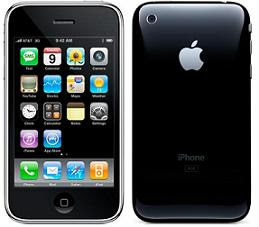 1: Apple iPhone 3G
1: Apple iPhone 3GThe original iPhone sold for as high as $599. So with a significantly reduced price, ranging from $199 to $399, and a name that flaunted the faster, more-connected third generation cell phone technology, the iPhone 3G was arguably the most anticipated smartphone to reach consumers' hands. Excitement was so high for the sequel to the iPhone, in fact, RBC analyst Mike Abramsky described the feeling among buyers as an "unprecedented pent-up demand" [Lane]. Indeed, bloggers and the media alike were covering Apple's Worldwide Developer's Conference 2008 seemingly by the second. Rumors bounced back and forth, cementing the iPhone 3G as "The Second Coming" [Cheng et al.].
The sales followed, as customers lined up days in advance and 3Gs sold out in 21 states over the course of five days [source: Foresman]. Despite activation problems on the first few days of sale, things smoothed out more or less and some analysts predicted Apple would sell nearly 5 million iPhones in its fourth quarter [source: CNN Money].
In terms of appearance, the iPhone 3G didn't differ too much from the original iPhone. The only noticeable change was in material -- the back of the new 3G is made out of plastic instead of metal, making it a little lighter. As far as features, the 3G offers, of course, faster 3G wireless performance, GPS mapping and support for the new App Store for unique applications.
Until Apple introduces the next generation iPhone or a competitor ups the ante, it's likely the 3G will hold the throne for a while.
2: RIM BlackBerry Pearl
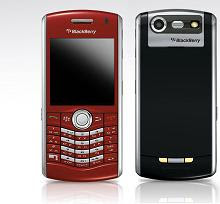 The BlackBerry smartphone, developed by Research in Motion (RIM), has become so popular in the cell phone world that talk of addiction is a recurring topic. Some users have become so attached to their BlackBerries, they claim to suffer from "ringxiety" -- the constant feeling that your BlackBerry is ringing or about to ring, whether or not it actually does. The technology has even earned the nickname of "CrackBerry," again alluding to its extreme addictive nature. Some owners reportedly wake up in the middle of the night just to check their e-mail.
The BlackBerry smartphone, developed by Research in Motion (RIM), has become so popular in the cell phone world that talk of addiction is a recurring topic. Some users have become so attached to their BlackBerries, they claim to suffer from "ringxiety" -- the constant feeling that your BlackBerry is ringing or about to ring, whether or not it actually does. The technology has even earned the nickname of "CrackBerry," again alluding to its extreme addictive nature. Some owners reportedly wake up in the middle of the night just to check their e-mail.The extensive connectivity of the BlackBerry no doubt lends itself to a potentially negative, obsessive-compulsive habit, but it also accounts for its huge popularity -- especially with businesses relying on easy communication. The BlackBerry Pearl, for instance, RIM's smallest model, combines phone, e-mail, text messaging, Internet and organizational applications into one tiny smartphone. It also offers an enhanced version of the QWERTY keyboard for easy typing, and it's the first BlackBerry to have still camera (1.3 megapixel), video capabilities and a music player.
BlackBerry's main rival (Apple iPhone 3G)edges RIM out in name recognition and popularity.
3: LG Chocolate
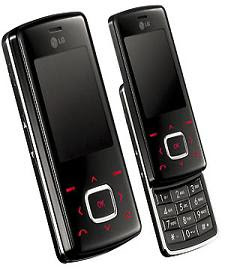 The LG VX8500, more commonly known as the LG Chocolate, was one of the more hyped cell phones on the market. When it debuted at the CTIA (Cellular Telecommunications and Internet Association) show in 2005, rumors flew back and forth as to where it would end up in the United States. Verizon Wireless finally provided service for the Chocolate, and the phone, thanks to flashy advertising campaigns and a low original price for a debut phone ($149), became a hit.
The LG VX8500, more commonly known as the LG Chocolate, was one of the more hyped cell phones on the market. When it debuted at the CTIA (Cellular Telecommunications and Internet Association) show in 2005, rumors flew back and forth as to where it would end up in the United States. Verizon Wireless finally provided service for the Chocolate, and the phone, thanks to flashy advertising campaigns and a low original price for a debut phone ($149), became a hit.The name "Chocolate" apparently comes from the phone's basic shape -- a somewhat boxy, rectangular form that resemble a chocolate candy bar -- and not because it tastes good or comes with a box of assorted chocolates (although that probably would make the phone even more popular). The original Chocolate slid up to reveal a number keypad, adding to its sleek appeal, while newer versions have switched to the slimmer flip phone design and added speakerphone, music players and VZ navigators.
4: Motorola RAZR
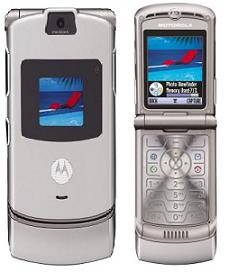 When you look at it from the front, the Motorola RAZR looks like any other flip phone. There's a small external display about the size of a stamp that shows the current time or incoming calls, and the entire phone is only a little bigger than a pack of gum. What made this cell phone such a big deal?
When you look at it from the front, the Motorola RAZR looks like any other flip phone. There's a small external display about the size of a stamp that shows the current time or incoming calls, and the entire phone is only a little bigger than a pack of gum. What made this cell phone such a big deal?Once you turn the Motorola RAZR sideways, its design appeal becomes instantly recognizable. While the phone measures 3.8 inches tall and 2.0 inches wide, its thickness measures a mere 0.5 inches, making it appear paper-thin compared to other cell phones. Most recent upgrades to the RAZR family include even thinner models, larger external displays that offer external texting with pre-programmed messages for when the phone is closed, full HTML browsing and e-mail and sturdier cases -- users initially worried that early models were too thin and could easily snap if handled improperly.
5: Samsung Glyde (U940)
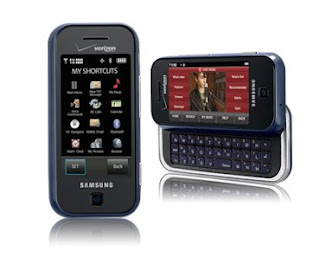 Many smartphones that attempt to feature a QWERTY keyboard (the same type of keyboard you use with your desktop or laptop computer) end up with problems -- buttons can be too small and difficult to press, usually because developers are trying to keep the phone small. Composing text messages and dialing on a smartphone, therefore, can be frustrating to some users; instead of making things smooth, streamlined and quick, too many mistakes slow things down.
Many smartphones that attempt to feature a QWERTY keyboard (the same type of keyboard you use with your desktop or laptop computer) end up with problems -- buttons can be too small and difficult to press, usually because developers are trying to keep the phone small. Composing text messages and dialing on a smartphone, therefore, can be frustrating to some users; instead of making things smooth, streamlined and quick, too many mistakes slow things down.The Samsung Glyde attempts to address the QWERTY problem by including a slide-out keyboard that's nearly the size of the entire phone, making typing messages much easier. The keyboard also makes surfing the Web a smoother experience, since the phone has a full HTML browser, and users can download entertainment with Verison Wireless' VCAST music and video. On top of this, the Glyde takes pictures and video with a 2.0 megapixel camera, supports Bluetooth technology and comes with an eternal memory port, called a microSD card slot, to store up to 8 GB of pictures, video and music.
6: Apple iPhone
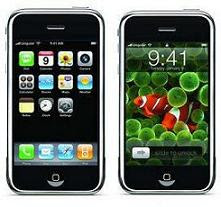 Leading up to the release of the original Apple iPhone in June 2007, the buzz surrounding the new smartphone was deafening among the news media and the blogosphere. When asked if the iPhone was an example of the convergence of computers and communication, Steve Jobs made sure to downplay the computer angle, calling it "the reinvention of the phone."
Leading up to the release of the original Apple iPhone in June 2007, the buzz surrounding the new smartphone was deafening among the news media and the blogosphere. When asked if the iPhone was an example of the convergence of computers and communication, Steve Jobs made sure to downplay the computer angle, calling it "the reinvention of the phone."Even though there were other smartphones coming out around this time, the iPhone certainly seemed like an entirely new type of cell phone. It's a sleek combination of a mobile phone, the Internet (complete with e-mail, browsing and map search) and the iPod MP3 player. On top of this, the iPhone interface features a multi-touch screen that allows users to make calls simply by pointing at a person's name and number, a trend many other smartphones would follow.
The iPhone also uses an accelerometer, which detects the movement of the device. This allows the user to rotate the phone from a vertical position to a horizontal one, changing the video display into a widescreen landscape -- perfect for watching TV shows and music videos downloaded from the Apple iTunes store.
7: Nokia 6555
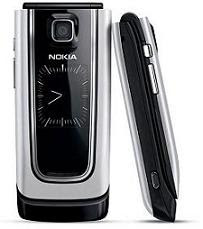 Another flashy cell phone meant to be easy on the eyes is the Nokia 6555. While most smartphones with bright, impressive video displays host around 262,000 colors, the internal display of the Nokia 6555 ups the ante by offering an astonishing 16 million colors, well above the average. It's so far above the average, in fact, it's twice as many colors as the human eye can physically see [source: Mobiledia].
Another flashy cell phone meant to be easy on the eyes is the Nokia 6555. While most smartphones with bright, impressive video displays host around 262,000 colors, the internal display of the Nokia 6555 ups the ante by offering an astonishing 16 million colors, well above the average. It's so far above the average, in fact, it's twice as many colors as the human eye can physically see [source: Mobiledia].The viewing screen is also large, featuring 240 x 340 pixels, and the built-in 1.3-megapixel camera has 6x zoom capability, despite its small size. Indeed, the Nokia 6555, a flip phone, measures 3.93 x 1.72 x 0.78 inches; it's tall but very slim. And despite this small size, the phone houses 30 MB of memory -- the cell's phone book can hold nearly everything, including 1,000 contacts with room for five phone numbers each, an e-mail address, birthdays and more. Photos or videos of each contact can also be assigned to pop up during calls. For video and music selections, the 6555 is compatible with AT&T Music and AT&T Video, offering tunes from Napster and Yahoo and video segments from NBC, Comedy Central, ESPN and CNN.
8: LG Vu
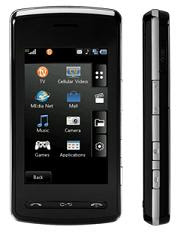 The name of this cell phone says it all: The LG Vu. The main focus for the Vu is, as it turns out, the viewing aspect. With most smartphones like the iPhone and the BlackBerry scrambling to offer everything in the way of downloadable television episodes, music videos and recordable video, LG decided to put visuals front and center with this model.
The name of this cell phone says it all: The LG Vu. The main focus for the Vu is, as it turns out, the viewing aspect. With most smartphones like the iPhone and the BlackBerry scrambling to offer everything in the way of downloadable television episodes, music videos and recordable video, LG decided to put visuals front and center with this model.The Vu sports a 3-inch touch screen and supports AT&T Mobile TV, a live mobile broadcast service sent straight to the phone. By turning the Vu sideways, the phone turns into a mini widescreen television -- there's even an extendable antenna at the top for better reception. Watching live programs costs viewers, of course, just like subscribers to cable or satellite television. A basic package costs $15 per month; a bigger, Plus package doubles the price to $30 per month. In addition showing TV on the go, the Vu also plays MP3s, hosts a GPS navigator, supports Bluetooth, has a 2.0 megapixel camera and camcorder and, of course, makes phone calls.
9: Sony Ericsson s500i
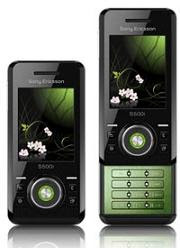 The Sony Ericsson s500i phone offers what many phones come with these days: Bluetooth capability, a 2.0-megapixel camera and a music player that supports MP3 and AAC audio formats. An alarm clock, calculator, calendar, phonebook, timer and access to a Web browser and RSS feeds make the s500i seem like a useful but fairly regular cell phone. So what sets it apart?
The Sony Ericsson s500i phone offers what many phones come with these days: Bluetooth capability, a 2.0-megapixel camera and a music player that supports MP3 and AAC audio formats. An alarm clock, calculator, calendar, phonebook, timer and access to a Web browser and RSS feeds make the s500i seem like a useful but fairly regular cell phone. So what sets it apart?
The main draw to the s500i, it turns out, is purely visual. The phone's screen and external lights allow you to set ever-changing themes: Depending on the time of the day, week or even the season, the screen's color layout and the phone's button illumination will change to reflect your surroundings. The phone has a thin-film transistor (TFT) screen that can display 262,000 colors at a resolution of 240 x 320 pixels. The s500i's screen and its slim slider form make it one of the flashier models out there.
10: Samsung Flipshot
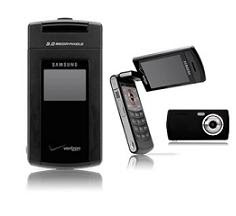 Most cell phones these days come with the ability to snap digital photos, whether the owner wants it or not. Because a cell phone is only so large and is designed to perform many different tasks, the quality of pictures taken from cell phones varies, ranging from OK to grainy, pixilated and blurry. In other words, cell phones aren't generally known for taking great pictures.
Most cell phones these days come with the ability to snap digital photos, whether the owner wants it or not. Because a cell phone is only so large and is designed to perform many different tasks, the quality of pictures taken from cell phones varies, ranging from OK to grainy, pixilated and blurry. In other words, cell phones aren't generally known for taking great pictures.The Samsung Flipshot, however, caught people's attention with its high-resolution pictures and unique design. The phone comes with a built-in 3.0-megapixel resolution camera, along with a flash for low-light photos, auto focus for sharper images and camcorder capability to capture video.
But taking a photo isn't a simple matter of flipping open your phone and pressing a button or two -- the Flipshot's design highlights what Samsung calls the "flip-and-twist" method. While it's open, the phone's screen has the ability to swivel 180 degrees. Once it's facing away from the user, the screen can flip backwards; it then closes, and turns horizontally to become a small digital camera.
Of course, it does all the things a typical cell phone does, too -- it makes phone calls and also supports Bluetooth technology. But the Flipshot's unique camera features attracted people who simply like to take pictures on the run, making it one of the most popular camera phones on the market.
Source:HowStuffWorks

No comments:
Post a Comment